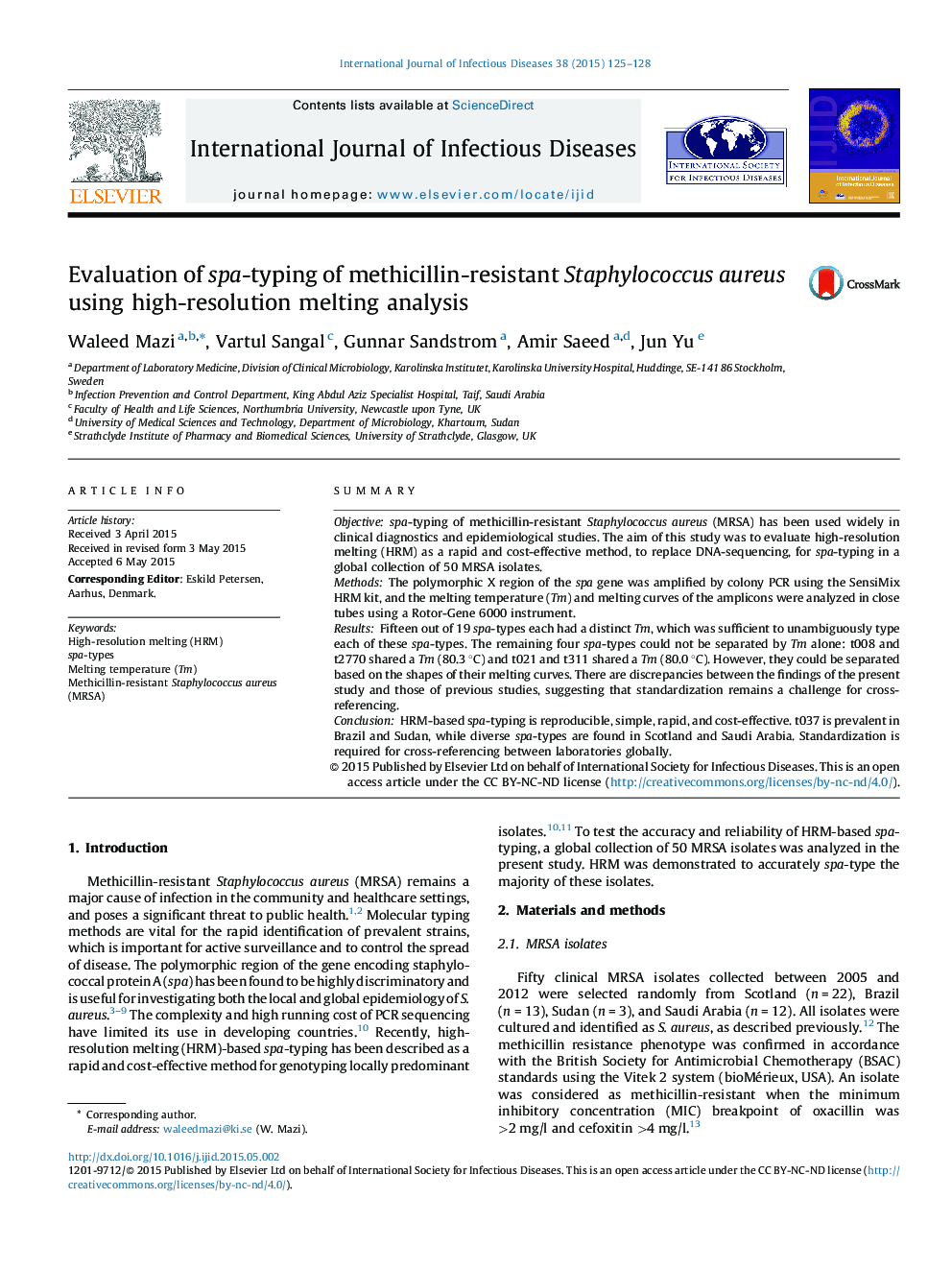| کد مقاله | کد نشریه | سال انتشار | مقاله انگلیسی | نسخه تمام متن |
|---|---|---|---|---|
| 3361995 | 1592057 | 2015 | 4 صفحه PDF | دانلود رایگان |
• DNA-sequencing and the application of BioNumerics software identified 19 spa-types in 50 isolates in a global methicillin-resistant Staphylococcus aureus collection. t037 was found to be prevalent in Brazil and Sudan, while diverse spa-types were found in Scotland and Saudi Arabia.
• DNA sequencing-based typing is time-consuming and expensive; the license for BioNumerics software alone costs approximately £6000 GBP for 3 years.
• Fifteen out of 19 spa-types were unambiguously identified by high-resolution melting analysis (HRM). This procedure is rapid (2 h per run for 72 samples) and more cost-effective than DNA sequencing.
• spa-types with shared Tm can be distinguished by the shapes of the melting curves, which requires training for expertise.
• Discrepancies in Tm values were found for a few spa-types from three studies performed in three independent laboratories, which highlights the need for optimization and standardization for cross-referencing.
SummaryObjectivespa-typing of methicillin-resistant Staphylococcus aureus (MRSA) has been used widely in clinical diagnostics and epidemiological studies. The aim of this study was to evaluate high-resolution melting (HRM) as a rapid and cost-effective method, to replace DNA-sequencing, for spa-typing in a global collection of 50 MRSA isolates.MethodsThe polymorphic X region of the spa gene was amplified by colony PCR using the SensiMix HRM kit, and the melting temperature (Tm) and melting curves of the amplicons were analyzed in close tubes using a Rotor-Gene 6000 instrument.ResultsFifteen out of 19 spa-types each had a distinct Tm, which was sufficient to unambiguously type each of these spa-types. The remaining four spa-types could not be separated by Tm alone: t008 and t2770 shared a Tm (80.3 °C) and t021 and t311 shared a Tm (80.0 °C). However, they could be separated based on the shapes of their melting curves. There are discrepancies between the findings of the present study and those of previous studies, suggesting that standardization remains a challenge for cross-referencing.ConclusionHRM-based spa-typing is reproducible, simple, rapid, and cost-effective. t037 is prevalent in Brazil and Sudan, while diverse spa-types are found in Scotland and Saudi Arabia. Standardization is required for cross-referencing between laboratories globally.
Journal: International Journal of Infectious Diseases - Volume 38, September 2015, Pages 125–128
